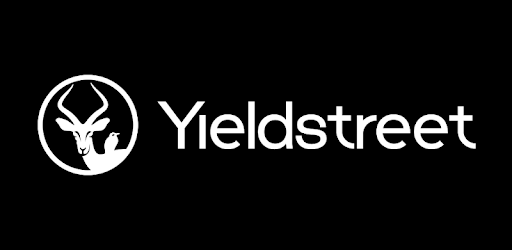Structured Notes: The Double-Edged Sword of Investing- Unveiling the Pros and Cons You Need to Know.

This article will examine the PROs and CONs of structured notes to help you determine if this alternative investment makes sense for your investment portfolio.
Key Takeaways
- Structured notes are debt securities issued by investment banks.
- Returns are based on the performance of underlying reference assets, like stocks, debt securities, indexes, commodities, etc.
- They combine bond and stock characteristics.
- Bond-Like Features: Have a fixed maturity, often pay coupons, and may return your initial investment.
- Stock-Like Features: Performance varies based on the underlying asset, and there’s the potential to lose your initial investment.
- PROS: Asset exposure without owning the underlying, customized Payouts, Can offer principal protection, Time Saving
- CONS: Limited liquidity, Can have call risk, Higher fees, Market Risk, Subject to bank credit risk
What Are Structured Notes & How Do They Work?
Structured notes are a type of debt issued by investment banks. The return is typically based on the performance of one or more underlying reference assets, such as a stock or interest rate benchmark. Structured notes can also incorporate features like leverage, principal protection, and downside protection.
The underlying reference assets may include individual stocks, debt securities, indexes, commodities, interest rates, foreign currencies, and baskets of these reference assets or market indexes like the S&P 500 or the Nasdaq.
Structured notes are unique because they have a hybrid of bond and stock characteristics, thus increasing investor appeal.
Bond-Like Characteristics:
- Fixed maturity
- Usually pays coupons
- Receive initial investment back (depending on the structure)
Stock-Like Characteristics:
- There could be an upside or downside based on the underlying asset’s performance asset.
- You could lose your initial investment (depending on the structure)
Generally, the greater the potential upside, the more likely the structure note will have stock-like characteristics. Meanwhile, the safer the investment,e.g., principal protected or limited upside, the more likely it will behave lmore like a bond.
PROs of Structured Notes
Structured notes provide a unique investment opportunity for retail investors. There are endless payout structures that can be designed, often too complex to replicate through traditional investing mechanisms.
Asset Exposure Without Owning The Underlying
One of the most significant advantages of structured notes is that you can gain exposure to an underlying asset(s) without owning the security. This is advantageous if an investor wants a directional view of the markets but cannot hold the underlying asset due to
Customized Payout Structure
Another pro of structured notes is that they can be designed to offer an endless number of unique payout structures that are difficult for retail investors to replicate without buying and selling complicated option structures, which can be nearly impossible for a retail investor to execute without significant investment knowledge.
Some common structures include leverage, increased yield, downside protection, principal protection, or even a buffered note, which offers enhanced return with a contingent amount of downside protection.
Principal Protection
Some (but not all) structured products offer capital protection, meaning you will not lose your initial principal investment. This is advantageous because investors can still earn higher returns than a Certificate of Deposit; however, it is lower than what you could make with a principal at-risk note.
Many principal-protected structured products are often referred to as Brokered CDs.
Principal-protected structured notes are a significant pro for those looking for income generation while minimizing potential capital loss.
Time Savings
Structured notes can save investors time.
Sure, individuals could reconstruct a structured note using a combination of call, put, and spread options, amongst other underlying. However, doing so is time-consuming and risky because one small mistake can disrupt the entire strategy and cause you to lose money.
Structured notes do the work for you, allowing you to spend more time on things you enjoy.
CONS of Structured Notes
At first glance, structured notes can be an ideal investment opportunity – but things aren’t always what they seem.
Below are some of the common disadvantages of structured products.
Limited Liquidity
The biggest con of structured notes is that they are not easily bought or sold on a secondary market.
Unlike stocks and bonds, structured notes do not have a public exchange like the NYSE, making them more of a buy-and-hold-to-maturity investment.
If you want to exit your investment before maturity, you can often sell it back to the issuing bank, but you will likely take a 1-2% hit on the fees from either the investment bank, the broker, or maybe both.
There is a secondary market for principal-protected notes, but liquidity is often very low.
The lack of liquidity is the most significant con of investing in structured products.
Call Risk
Many structured notes offer call features enabling the issuing bank to call back the note and return an investor’s initial deposit.
Often, structured notes are non-callable for 1 or 2 years and then callable quarterly after that.
During the no-call period, the note may even offer what is colloquially referred to as a ‘teaser rate’ during those first 2 years, providing an above-average coupon to the investors to entice them to purchase the structured product.
If the trade is moving against the issuing bank and they are losing money, they may exercise the call option after the no-call period expires.
NOTE: Many structured notes are usually non-callable for 1 or 2 years after issuance and then callable quarterly after that.
Market Risk
Even though you are buying a structured product and not the underlying asset, the value of the structured note after it is issued largely depends on the performance of the underlying asset(s).
Higher Fees
Structured notes can have high fees. Brokers usually sell notes and can have up to a 2% commission.
This fee is usually embedded into the note price, so investors do not see the fees unless they read the term sheet, which is often filled with complicated investing jargon.
For Example: A broker may buy a note from an investment bank worth $980. Then, they will sell it to retail investors for $1,000, pocketing $20 or a 2% commission. The person who purchases the structured note will not see the fee because it is embedded in the purchase price.
Subject to Bank Credit Risk
The last potential disadvantage of structured notes is that they are subject to the credit risk of the issuing bank. If the issuing bank fails, there is a possibility that you could lose some or all of your initial investment.
While experts agree that banks are much more stable after the 2008 financial crisis, it is still a risk investors should be aware of. During the 2008 financial crisis, structured product investors saw the value of notes issued by Lehman become virtually worthless overnight due to the company’s bankruptcy.
How To Invest in Structured Products
Structured Products have historically been inaccessible to everyday investors like you and me. But over the years, it’s become increasingly common for big-name retail brokers like Fidelity and Charles Schwab to offer these products to their clients.
YieldStreet
Yieldstreet is a popular marketplace for alternative assets and structured products. However, most of Yieldstreet’s products are only open to accredited investors, those making more than $200,000 per year.
Read our complete YieldStreet Review.
The Bottom Line
Structured notes can be a tempting investment opportunity. However, as the saying goes, ‘If it’s too good to be true, it probably is.’
If used correctly, structured notes can benefit an investor’s portfolio by adding diversification, hedging your portfolio, or aligning your portfolio to a particular market or economic view.
The problem is that many individuals don’t read the fine print (I mean, really would you?) and get trapped by high teaser rates and juicy above-market returns.
Structured notes can be complicated. You must understand the factors that can impact your returns; otherwise, you could lose some or all of your principal.
So before you jump headfirst into a structured product, you should ensure the product aligns with your investment objectives and perform thorough due diligence before investing.




